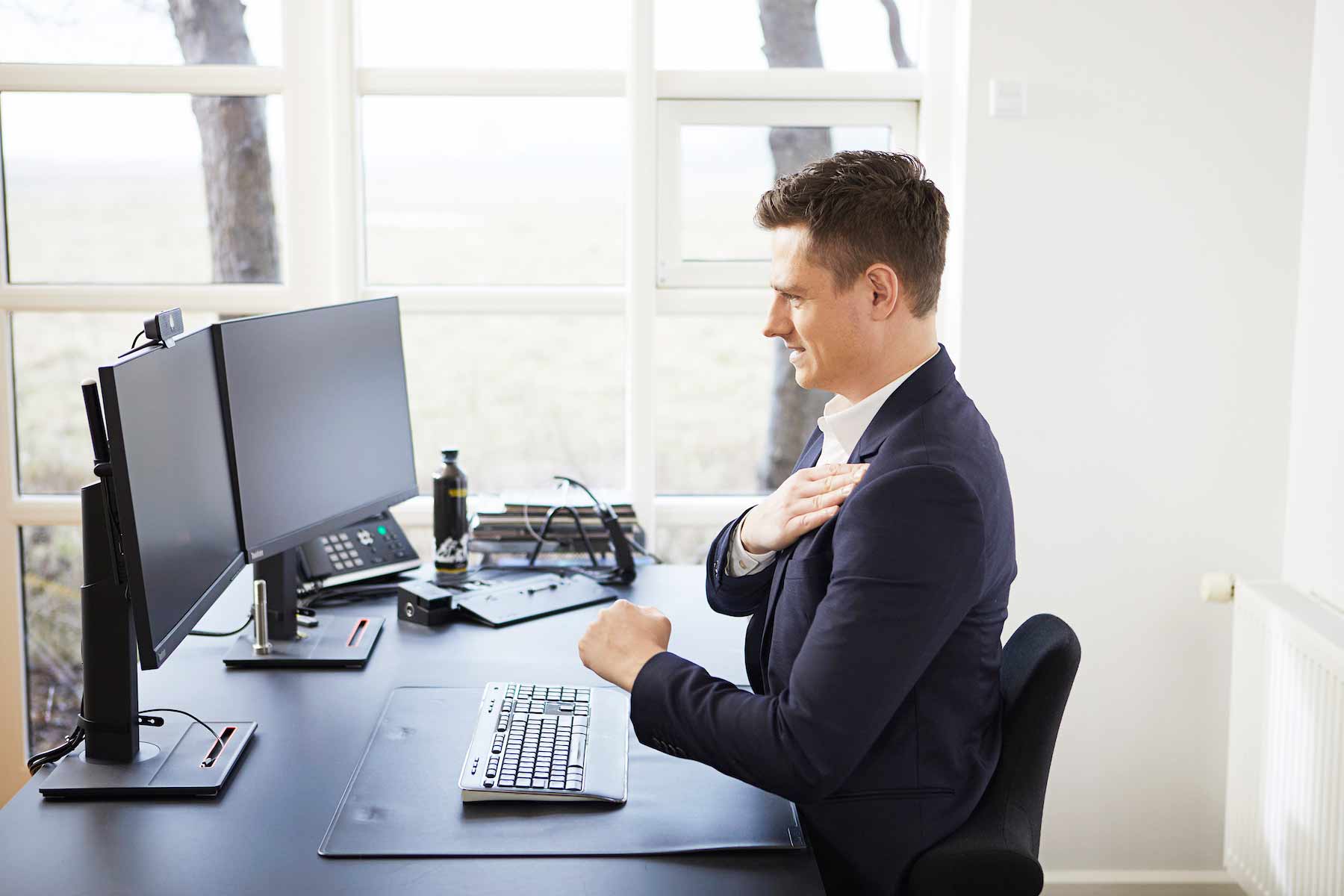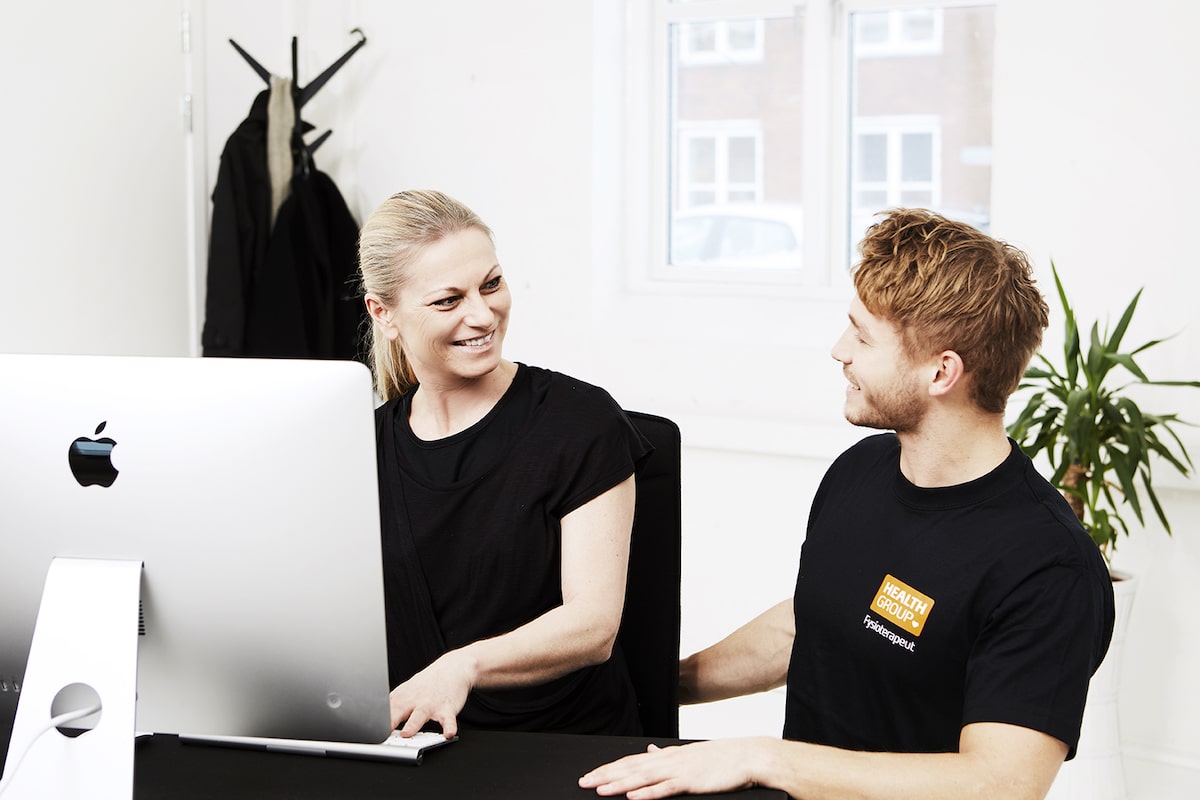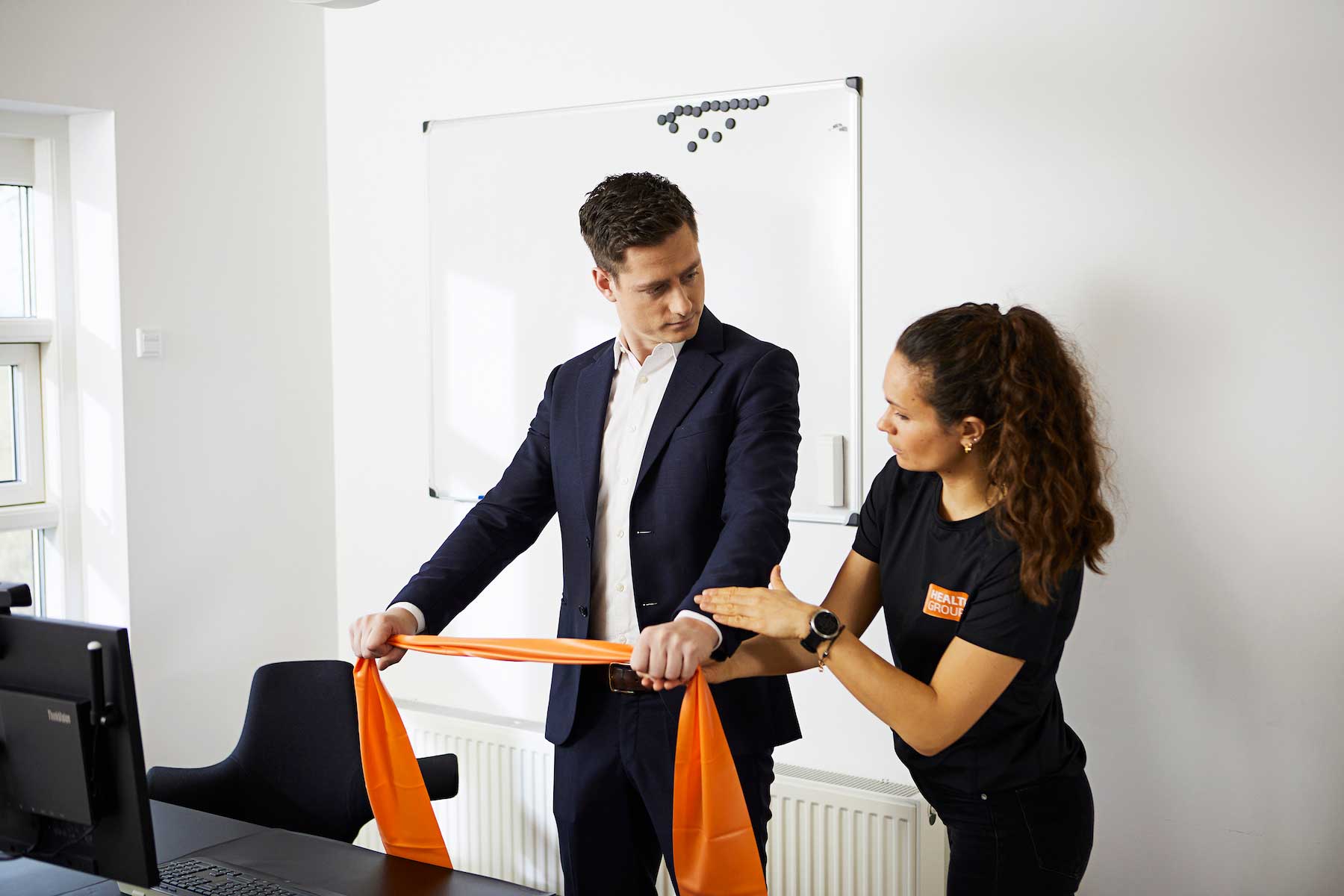10 tips for good ergonomics in the workplace

Ergonomics is the art of creating a work environment that's right for you. It's about creating an environment where comfort, efficiency and health go hand in hand to improve your wellbeing and boost your productivity.
Below you can read our top tips for creating good ergonomics in the workplace.
The three points of the chair
The chair is an essential item for anyone who works in an office. It can be your worst enemy or your best friend, depending on whether it suits you. To quickly assess whether your chair is right for you, these three points need to be met:
- When you sit on the chair, both your feet should have a solid footing.
- There should be a gap of two to four fingers from the back of the knee to the edge of the chair
- You should feel full support in your lower back; neither above nor below.
The three points also ensure a comfortable working position during your workday. Want a more in-depth look at how your workplace can optimize your ergonomics?
What can we do for your workplace?Vary the height of your chair
When you sit on a chair for a long time, you tend to sit in the same postures. This puts strain on the same muscles and joints. To reduce the strain on these structures, you can change the height of the chair. In this way, you can vary the posture of your back and thus reduce the strain on the same structures.
Start your day by placing your chair high. This forces you to sit forward on the chair with a straight back. When your back gets tired, you can lower the height of your chair and sit back on the seat with full lumbar support.
Relax the shoulder
It is important to keep your shoulders relaxed throughout your working day. Make sure that the desk is not placed too high so that you have to lift your shoulders when working. Similarly, the desk may be too low, forcing you to arch your back to reach your work. To find the right height, bring your arms down at your sides and relax your shoulders. Next, place your elbow in at the hip and make a 90⁰ angle at the elbow. Remember to extend your fingers and rotate your wrist so that your fingers are horizontal. The height of the table should match the position of your fingers.

Use the standing working position
Muscles need to be stimulated - when you stand up, you use the stabilizing muscles in your lower back. These muscles help give the lower back the support that the rest of the back needs. Therefore, stand up several times during the day. When you start to rest on your table, it's time to sit down again. In order not to forget to use the standing posture, you can set an alarm. Remember to set your desk up last when you go to lunch and when you go home. This way, you will be ready to stand up when you return to your workstation.
Avoid mouse damage
Many people experience discomfort or pain in the wrist and forearm during office work. The vast majority of these are diagnosed as mouse injuries, also known as mouse arm. To avoid mouse injuries, it is important that your wrist is placed in a neutral position. Therefore, avoid bending and stretching your wrist when working with a mouse and keyboard. This can be done by making sure your keyboard is low and your mouse is ergonomically designed. If this doesn't help, you can replace your normal mouse with a rollermouse or get a mouse and keyboard wrist rest. In the vast majority of cases, this will eliminate the local discomfort.
Position the screen correctly
The position of your monitor on the table has a big impact on your neck muscles. If the screen is crooked or too close to you, you are forced to bend your neck. Start by placing your monitor straight in front of you. The distance should be 80-100 cm from you to the screen. Make sure that your monitor is at a height so that you are looking at the top of the screen when you look straight ahead. As you work, your gaze will naturally drop to the center of the screen and your neck will be in its natural resting position.

Five-minute break
Since caveman times, humans have been used to being in constant movement. Office work, on the other hand, encourages inactivity and static muscular work. The back therefore needs to be moved through. Remember to take a five-minute break every hour - get away from your workstation. For example, take a walk on the stairs, go outside or get a drink.
Ventilation in the room
Workplace ergonomics also covers the physical working environment. Therefore, pay attention to your surroundings. If the air is heavy and stagnant, it can be an advantage to place fans in the room to create better ventilation and thus a better indoor climate. Good ventilation can give you better working conditions and refresh you when you feel tired and drowsy. Place the fans diagonally in the room and set them to blow along the wall so you don't feel the wind.
Control lighting
As the amount of light we need varies, finding the right amount of lighting can be difficult. In general, you should try to get as much daylight as possible, but avoid sitting in direct sunlight. If you can't get enough daylight, you can supplement with artificial light in the form of ceiling lights and table lamps. Be aware, however, that you should avoid glare from the artificial light as much as possible. Position your table lamp so that it shines behind your screen or get an adjustable switch on your ceiling light so that you can regulate the amount of light yourself.
Two minutes of stretching
Why exercise at work? Exercise can help prevent and treat discomfort and some types of injuries. Studies have shown that just two minutes of stretching every day can reduce pain in the shoulder and neck region. The elastic is easy to carry with you to and from work and can even be packed in your suitcase when you go on vacation. If you need inspiration for exercises, you can get help at JobogKrop.dk or by contacting your local physiotherapist.

Does your workplace need an ergonomic review? Then book one with Health Group.
Ergonomics in the workplace




